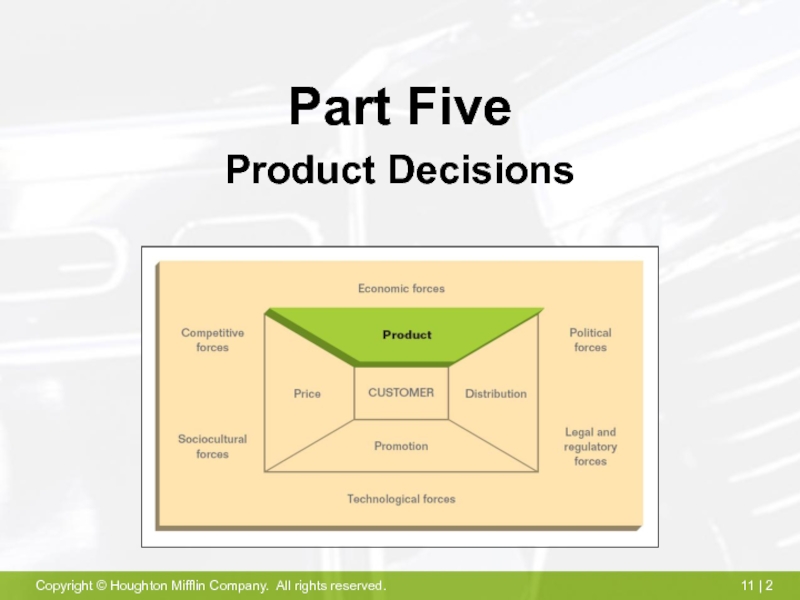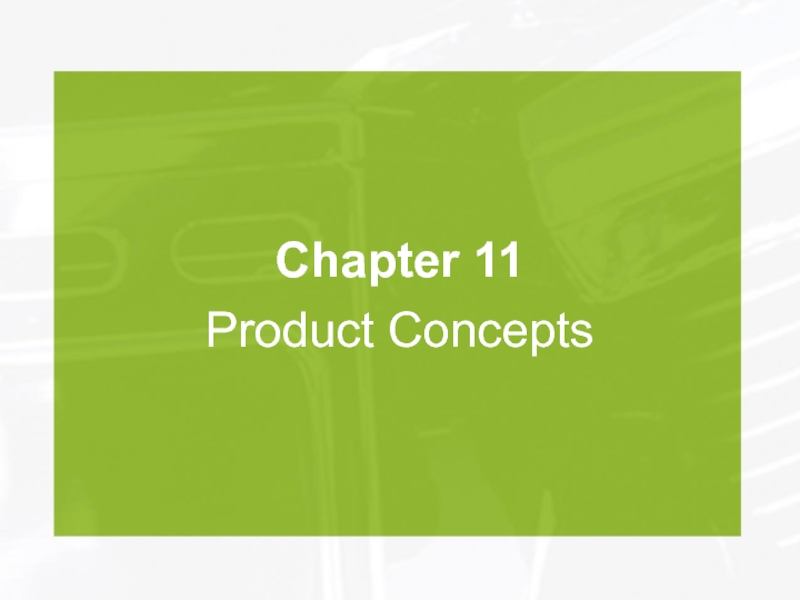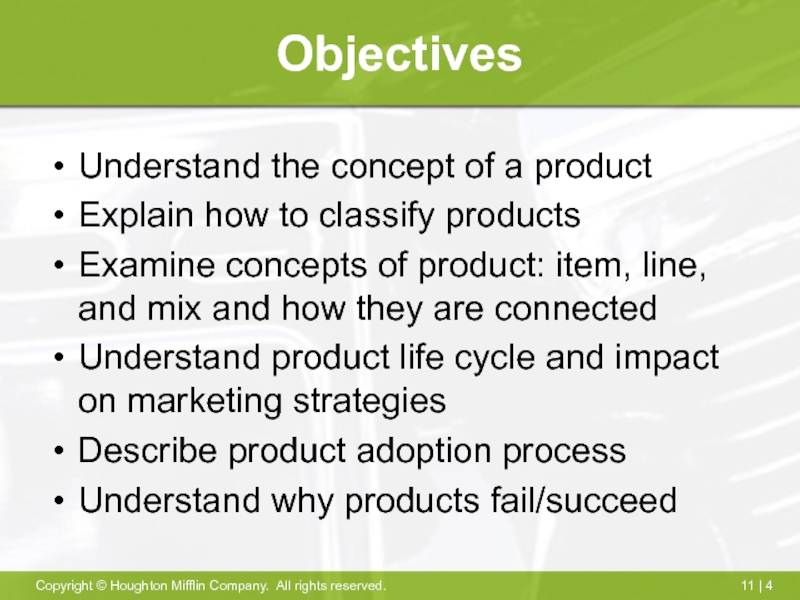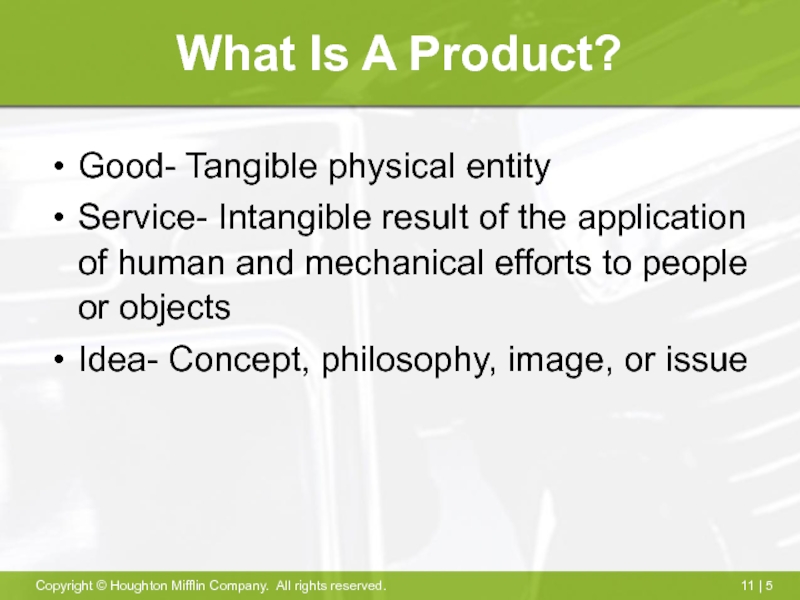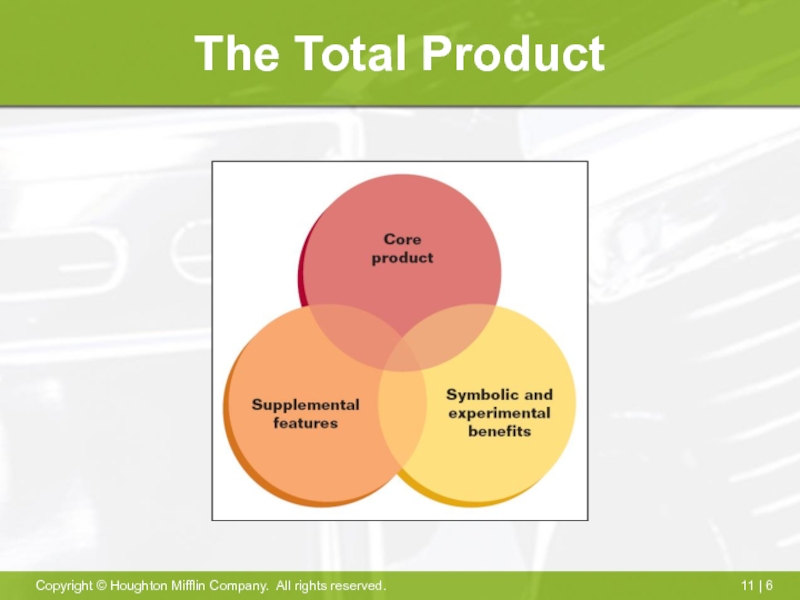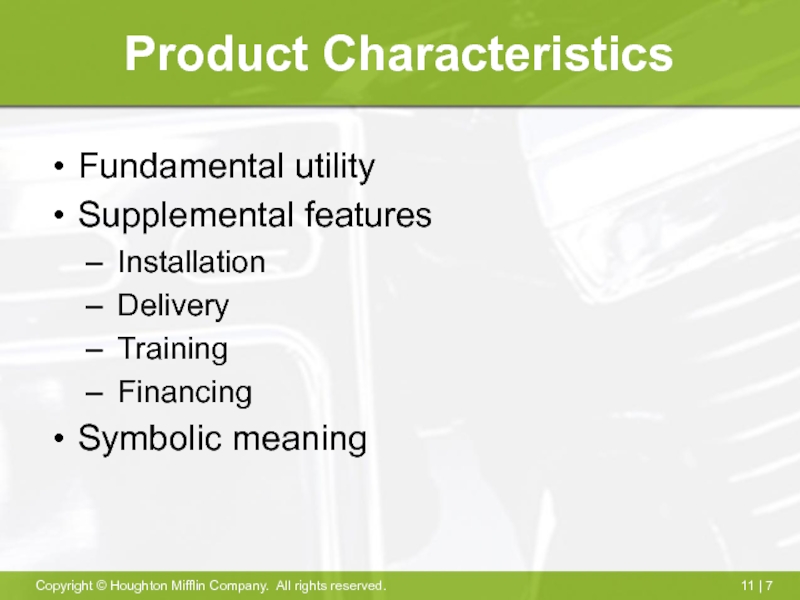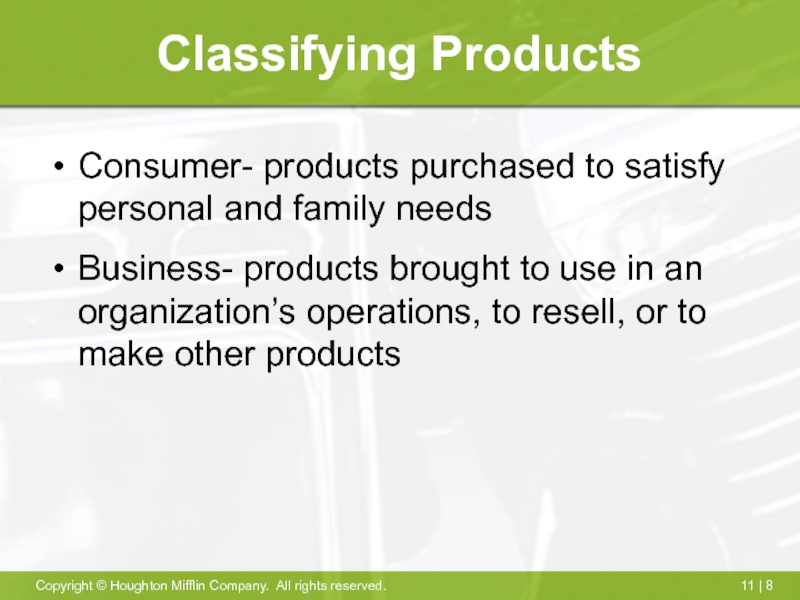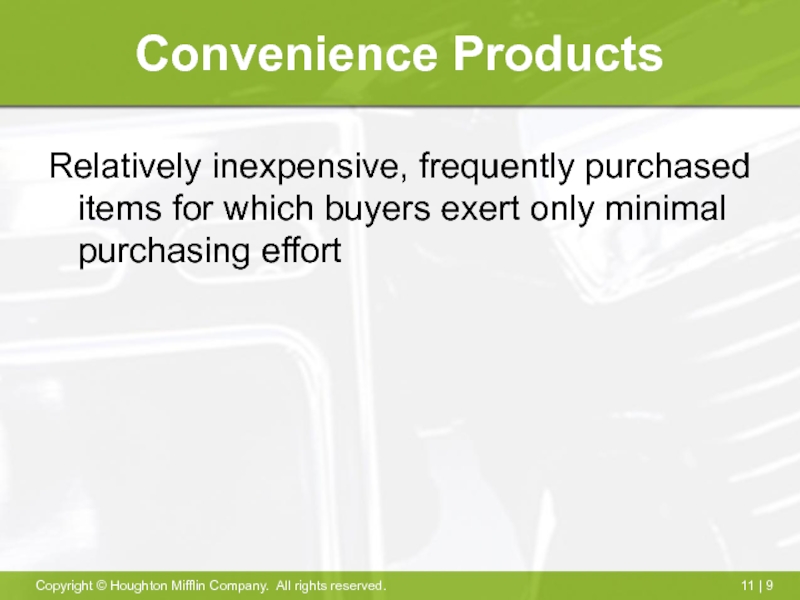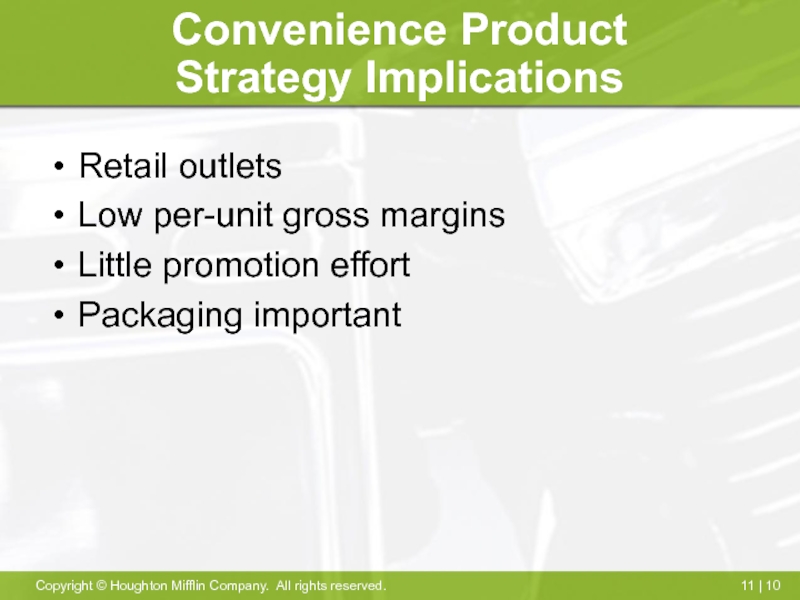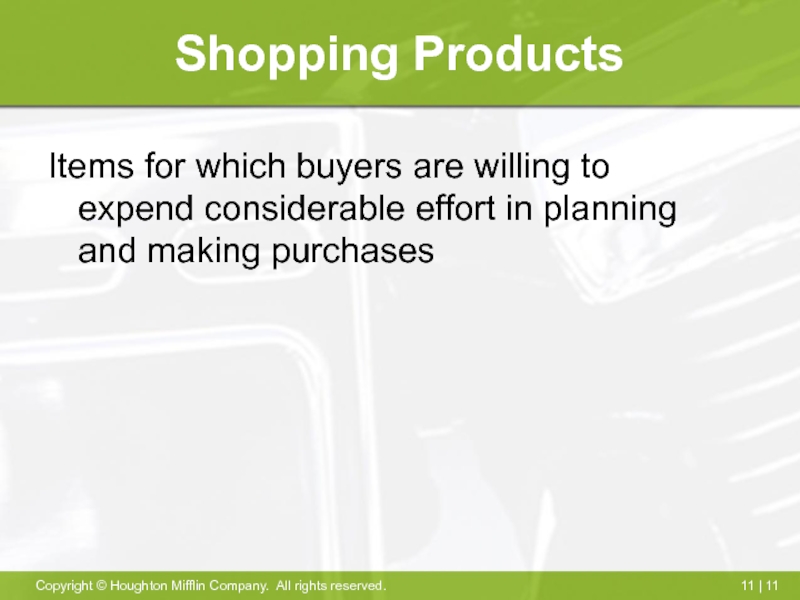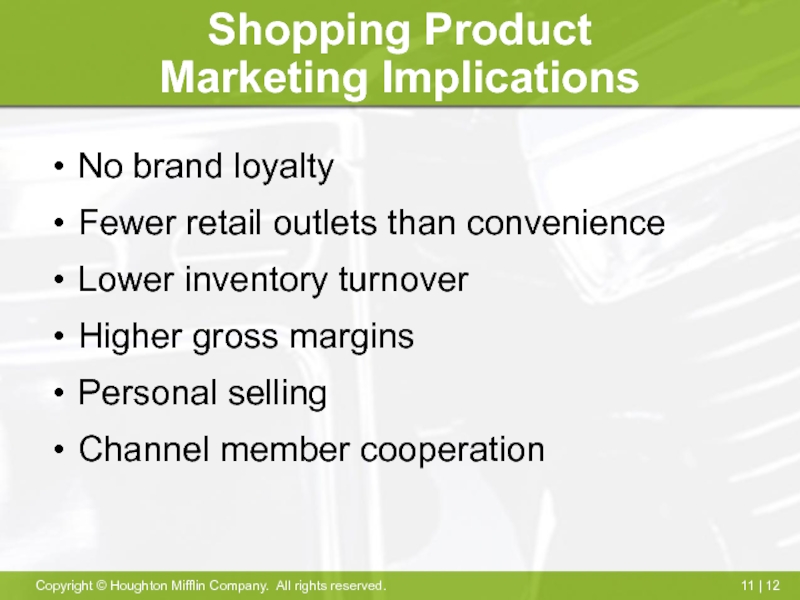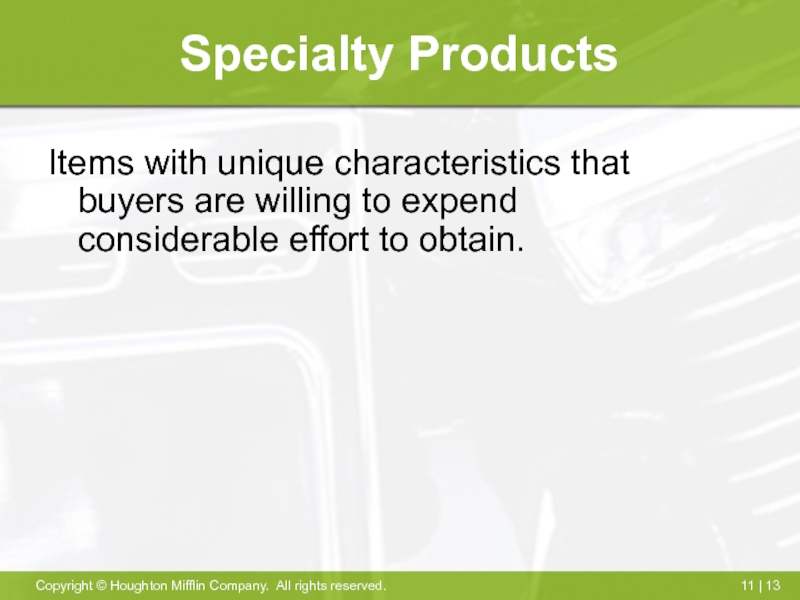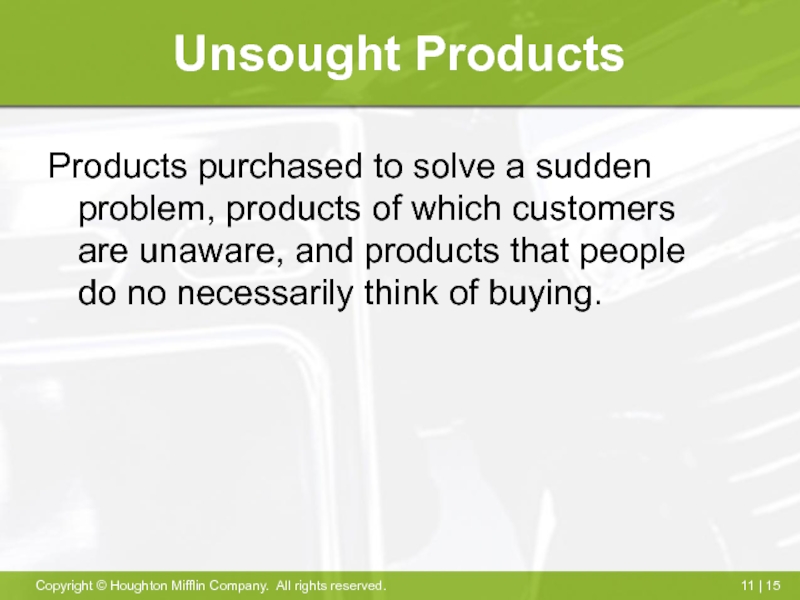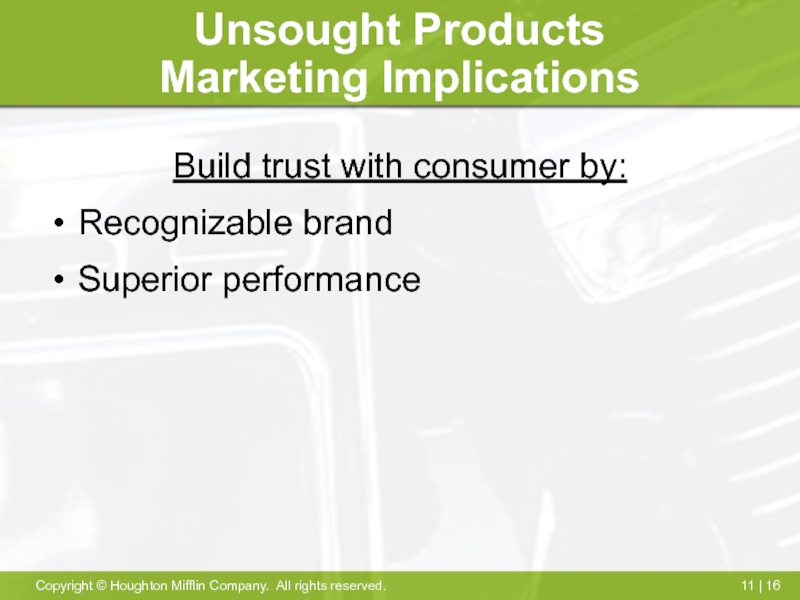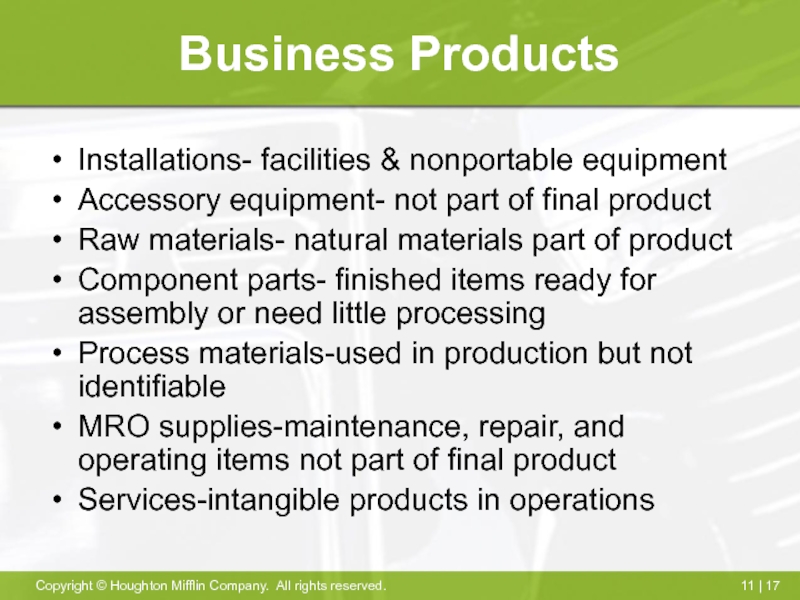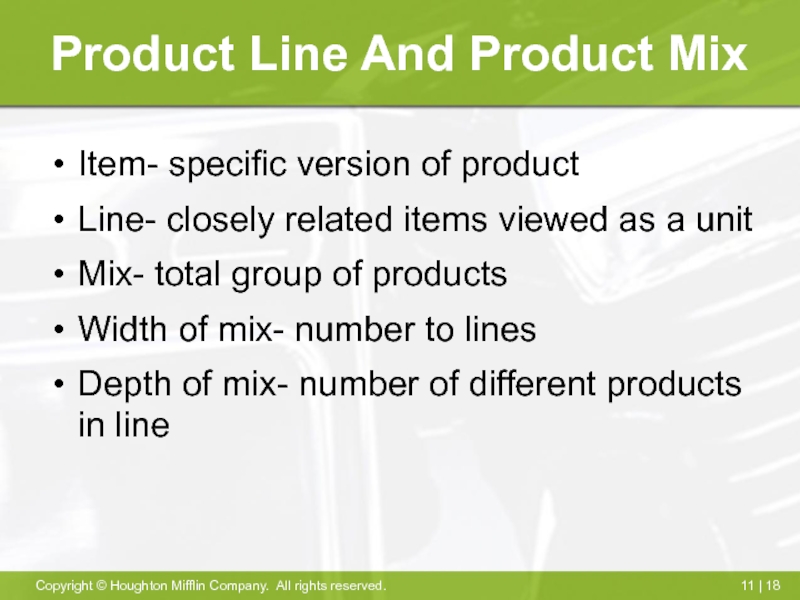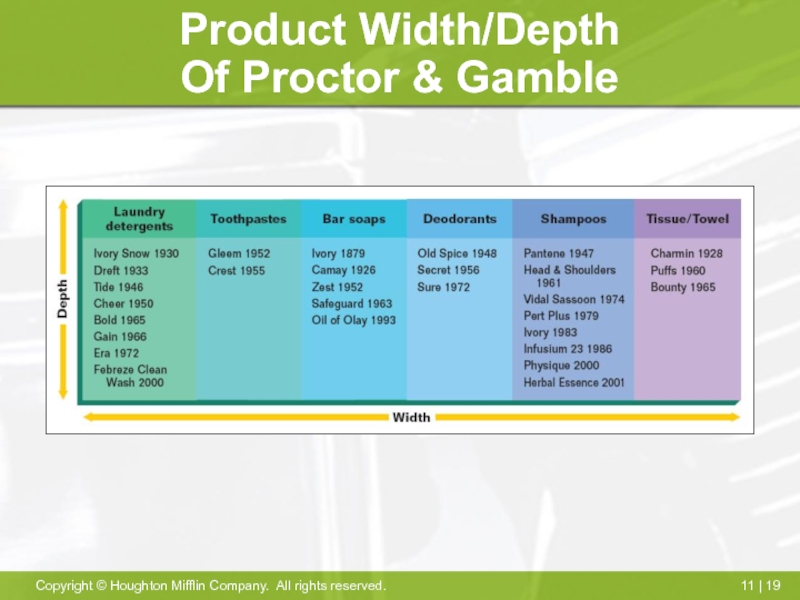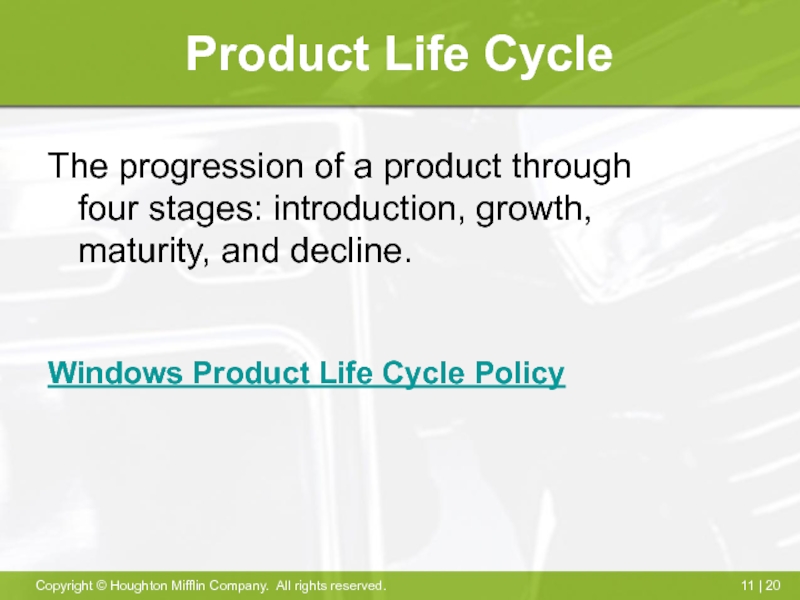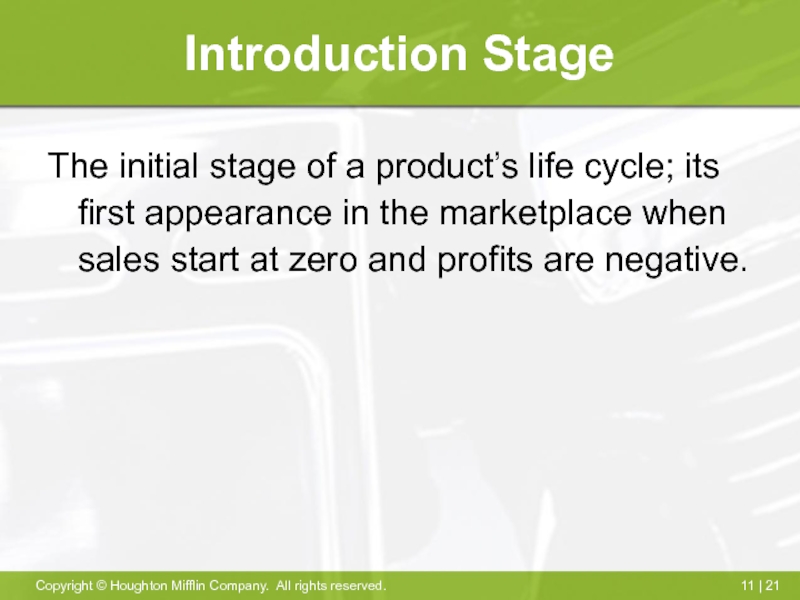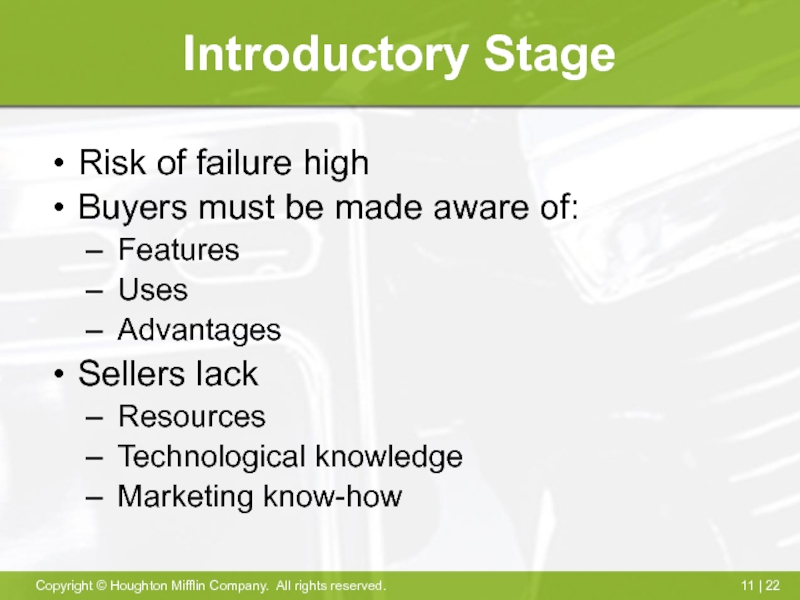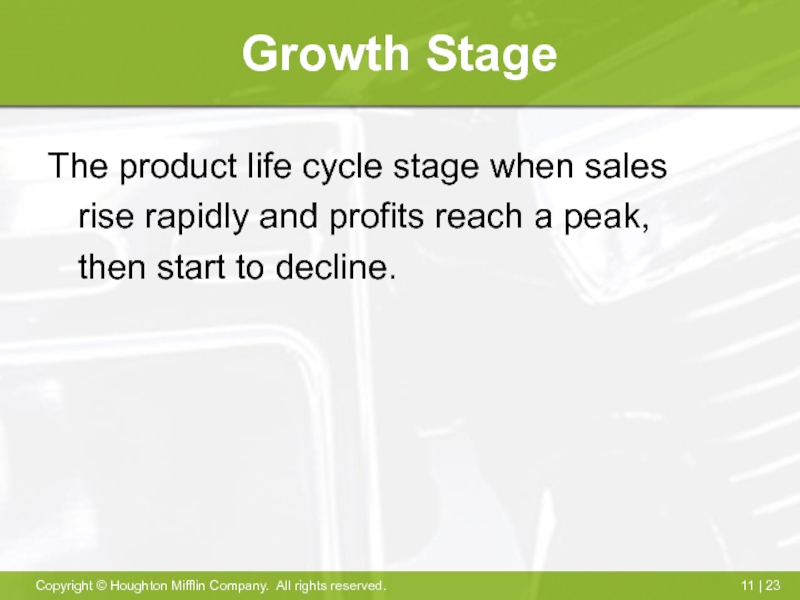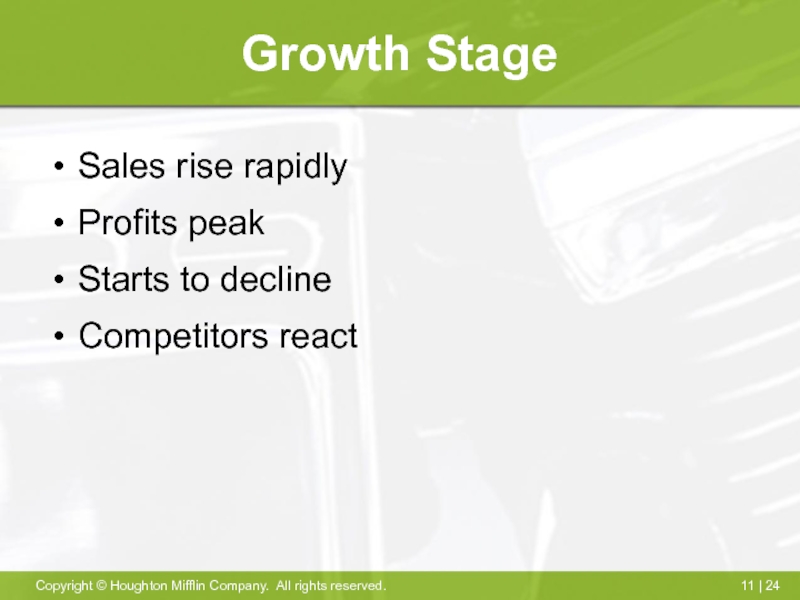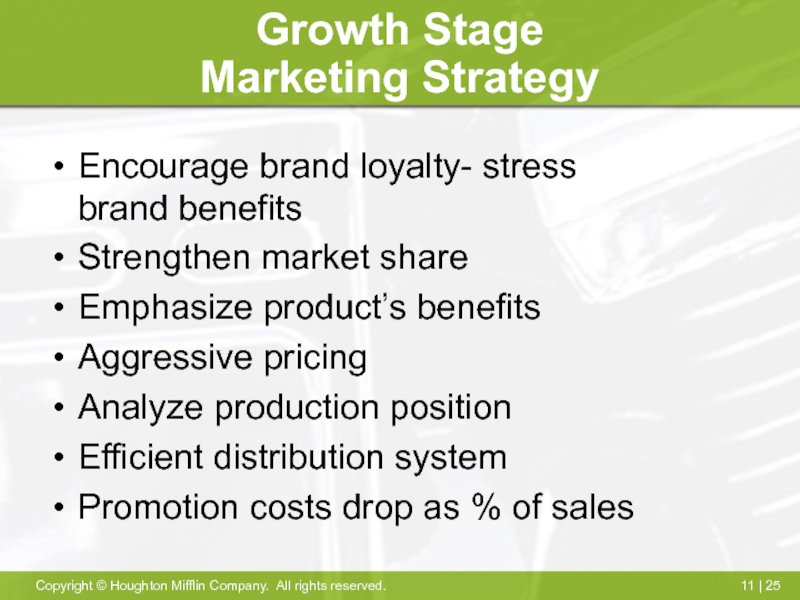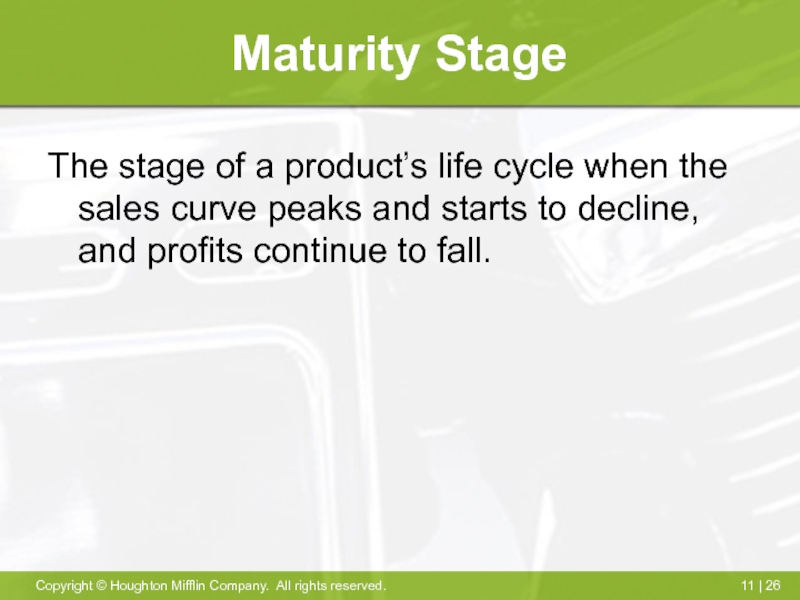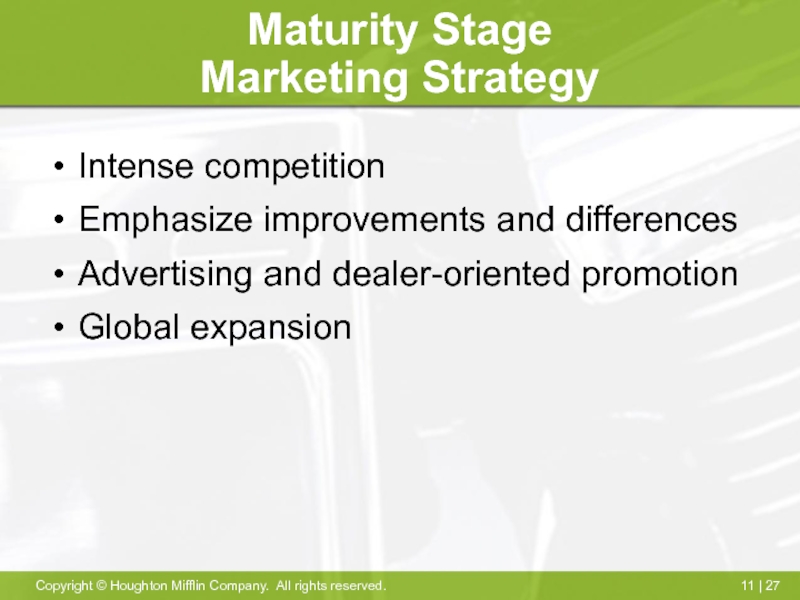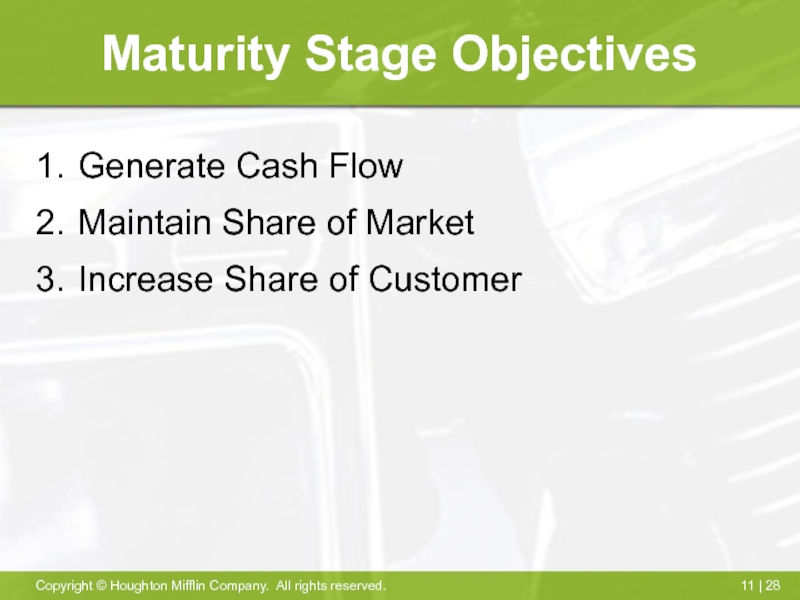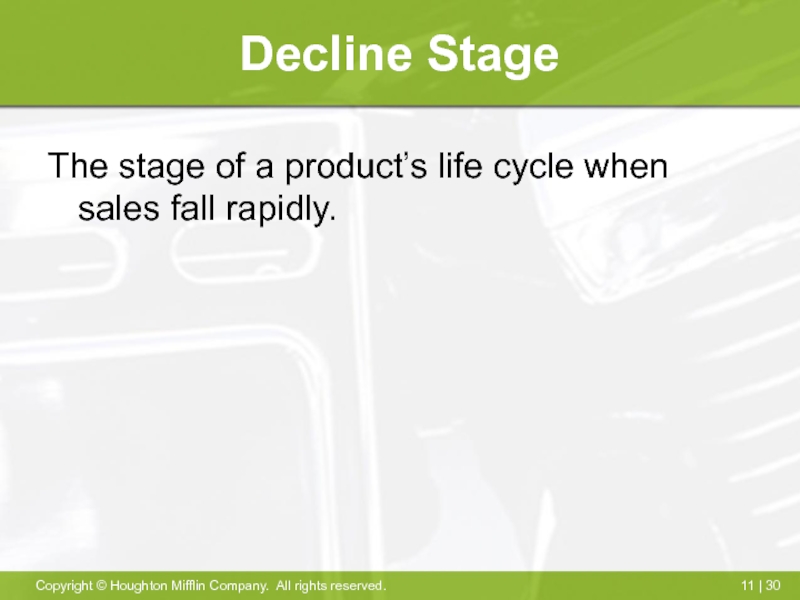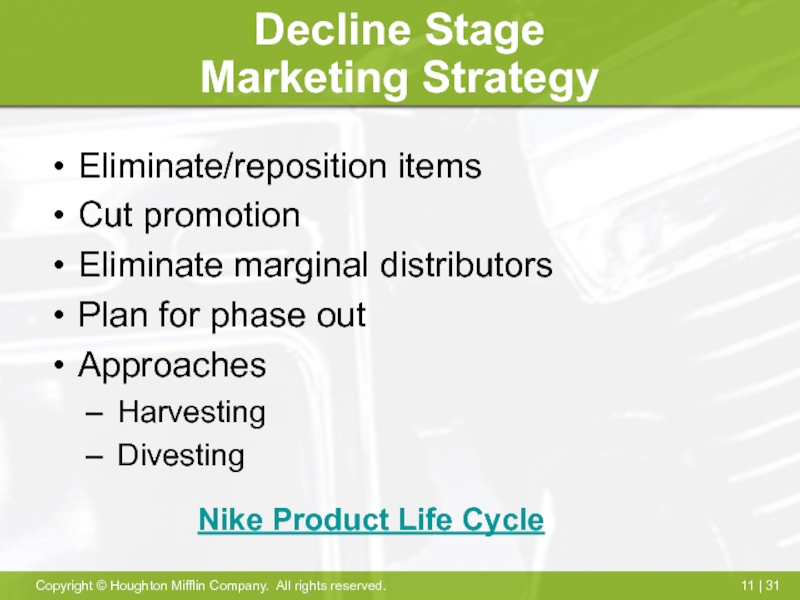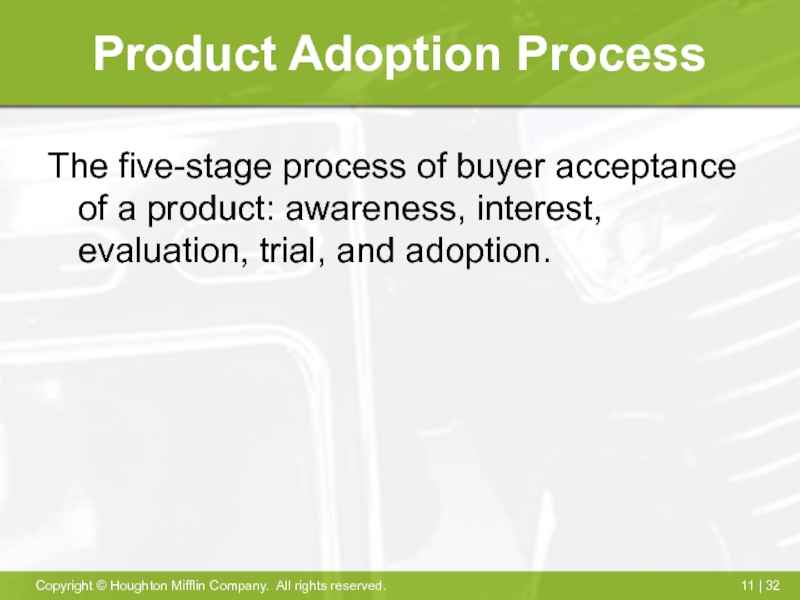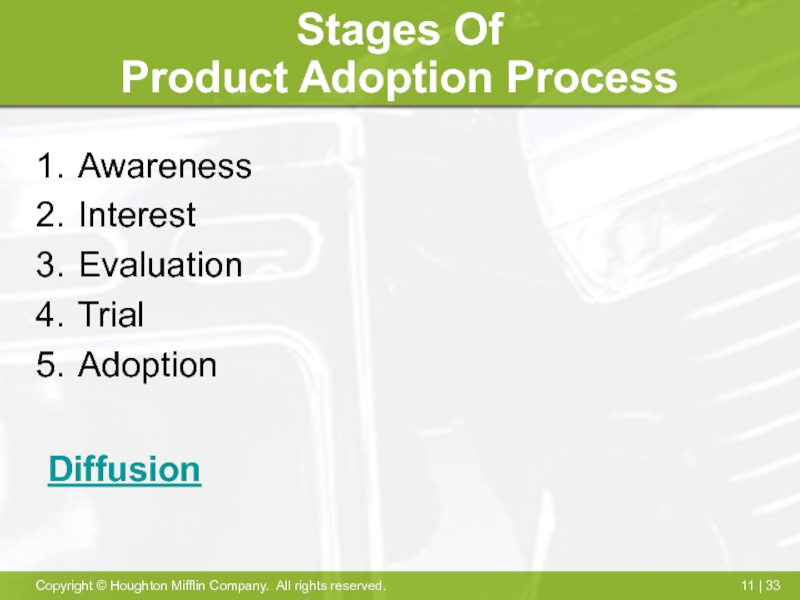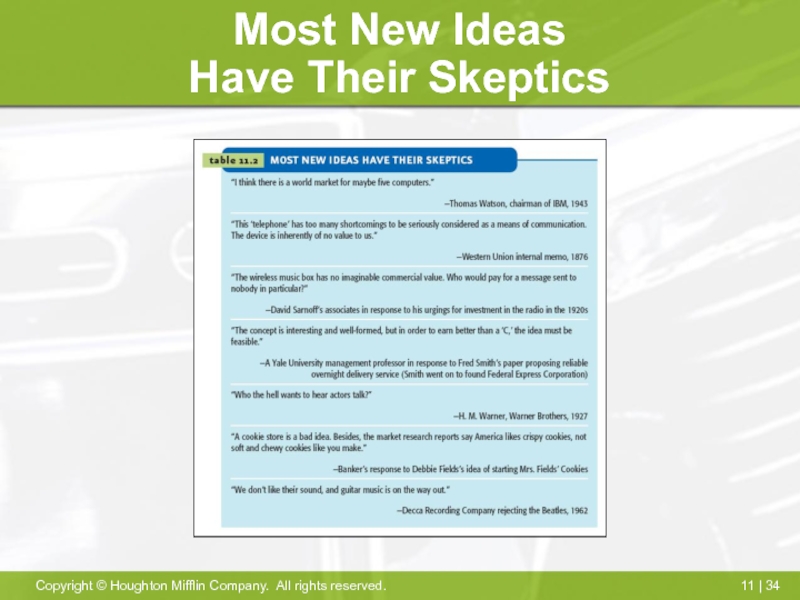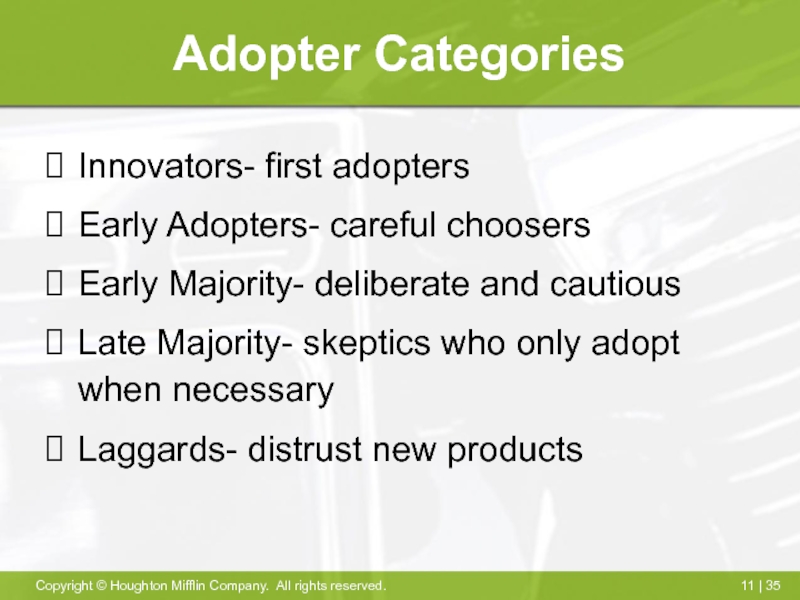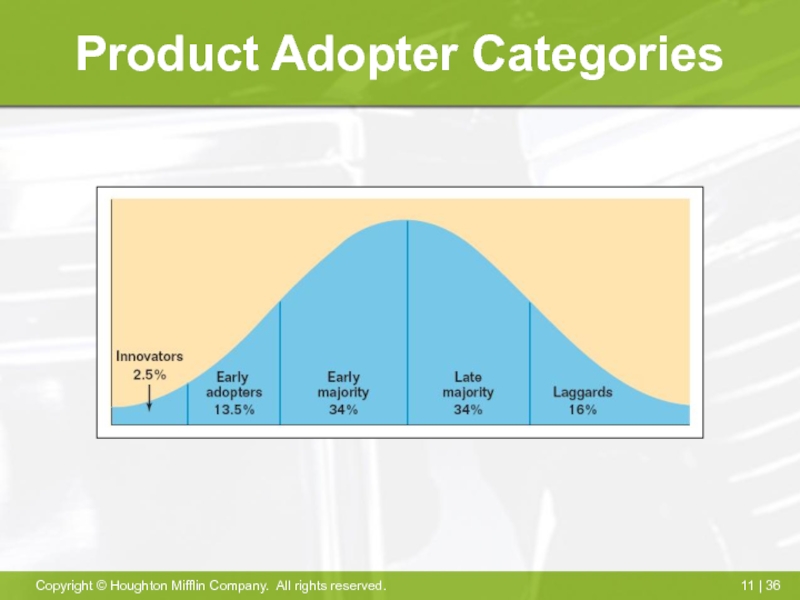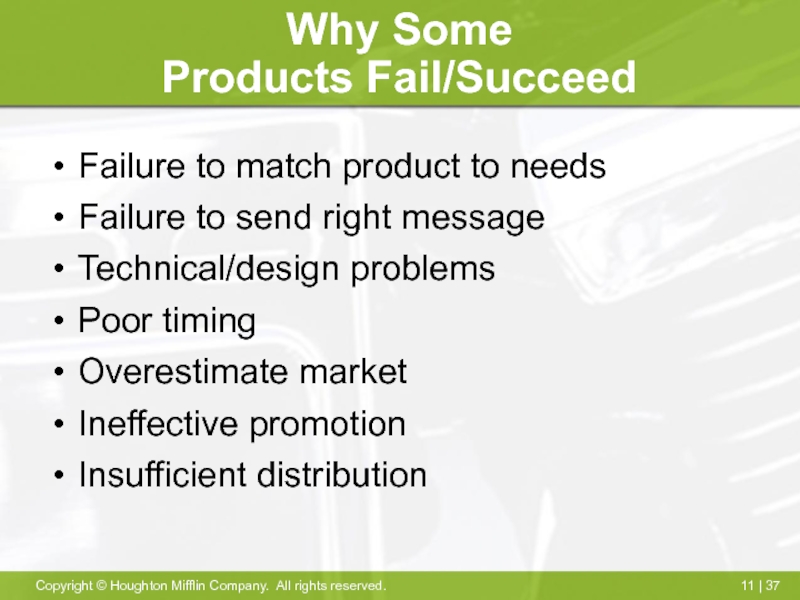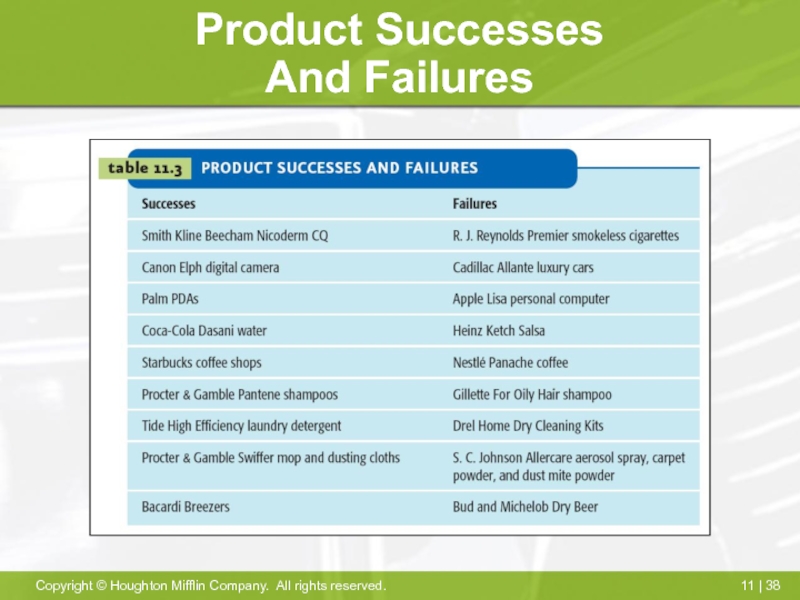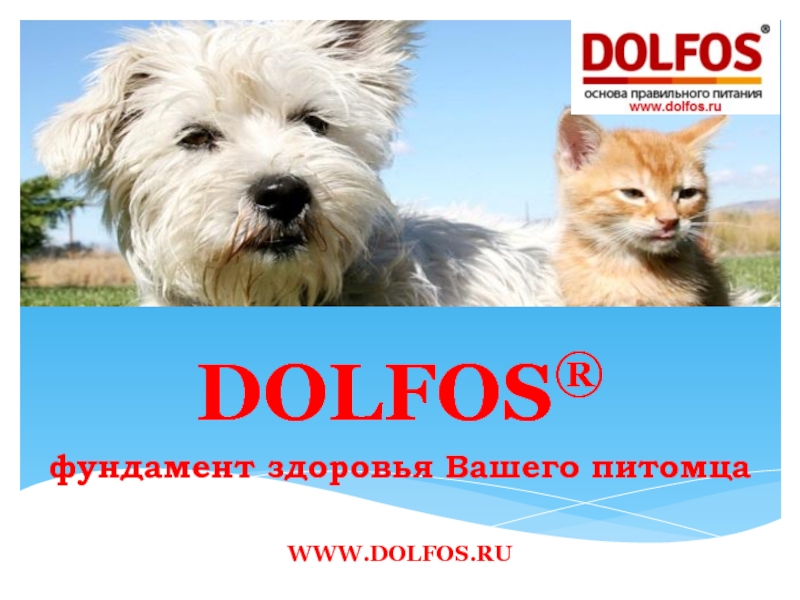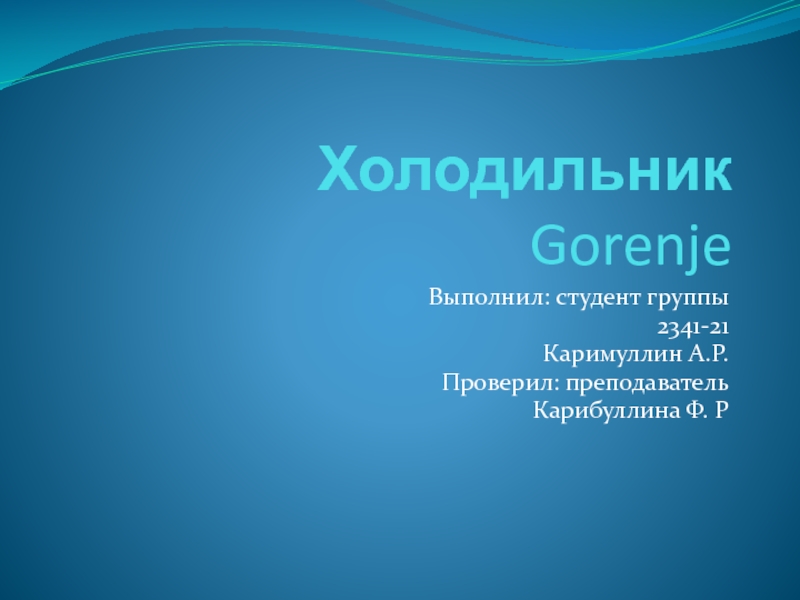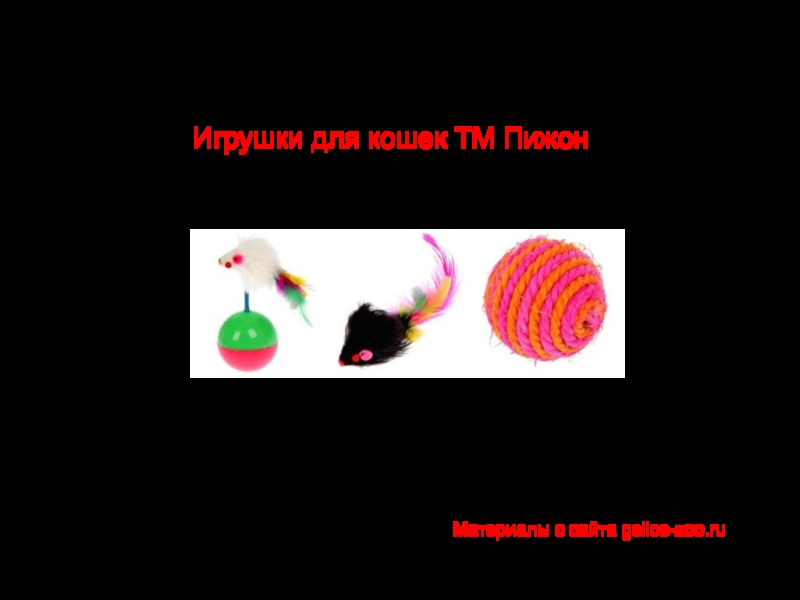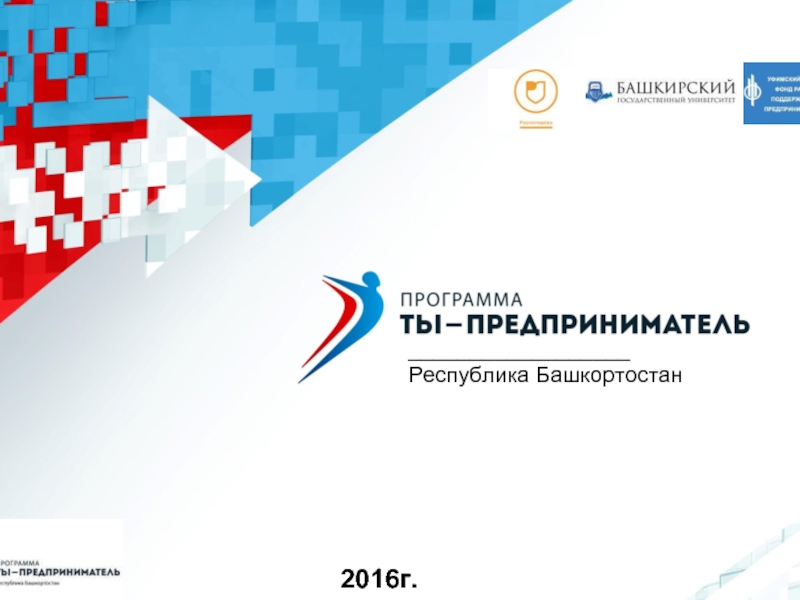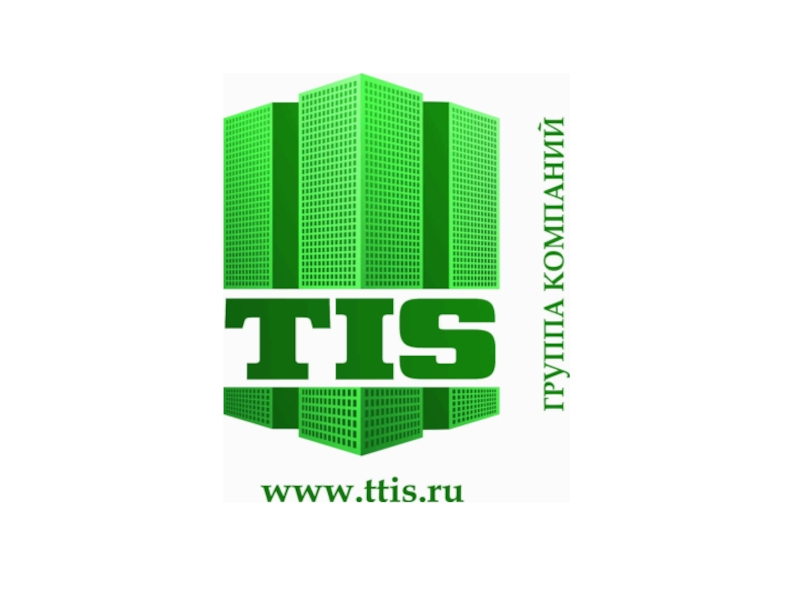- Главная
- Разное
- Дизайн
- Бизнес и предпринимательство
- Аналитика
- Образование
- Развлечения
- Красота и здоровье
- Финансы
- Государство
- Путешествия
- Спорт
- Недвижимость
- Армия
- Графика
- Культурология
- Еда и кулинария
- Лингвистика
- Английский язык
- Астрономия
- Алгебра
- Биология
- География
- Детские презентации
- Информатика
- История
- Литература
- Маркетинг
- Математика
- Медицина
- Менеджмент
- Музыка
- МХК
- Немецкий язык
- ОБЖ
- Обществознание
- Окружающий мир
- Педагогика
- Русский язык
- Технология
- Физика
- Философия
- Химия
- Шаблоны, картинки для презентаций
- Экология
- Экономика
- Юриспруденция
Product decisions презентация
Содержание
- 2. Part Five Product Decisions
- 3. Chapter 11 Product Concepts
- 4. Objectives Understand the concept of a product
- 5. What Is A Product? Good- Tangible physical
- 6. The Total Product
- 7. Product Characteristics Fundamental utility Supplemental features Installation Delivery Training Financing Symbolic meaning
- 8. Classifying Products Consumer- products purchased to satisfy
- 9. Convenience Products Relatively inexpensive, frequently purchased items for which buyers exert only minimal purchasing effort
- 10. Convenience Product Strategy Implications Retail outlets Low per-unit gross margins Little promotion effort Packaging important
- 11. Shopping Products Items for which buyers are
- 12. Shopping Product Marketing Implications No brand loyalty
- 13. Specialty Products Items with unique characteristics that
- 14. Specialty Product Marketing Implications Limited retail outlets Lower inventory turnover High gross margins
- 15. Unsought Products Products purchased to solve a
- 16. Unsought Products Marketing Implications Build trust with consumer by: Recognizable brand Superior performance
- 17. Business Products Installations- facilities & nonportable equipment
- 18. Product Line And Product Mix Item- specific
- 19. Product Width/Depth Of Proctor & Gamble
- 20. Product Life Cycle The progression of a
- 21. Introduction Stage The initial stage of a
- 22. Introductory Stage Risk of failure high Buyers
- 23. Growth Stage The product life cycle stage
- 24. Growth Stage Sales rise rapidly Profits peak Starts to decline Competitors react
- 25. Growth Stage Marketing Strategy Encourage brand loyalty-
- 26. Maturity Stage The stage of a product’s
- 27. Maturity Stage Marketing Strategy Intense competition Emphasize
- 28. Maturity Stage Objectives Generate Cash Flow Maintain Share of Market Increase Share of Customer
- 29. Managing Products In The Maturity Stage
- 30. Decline Stage The stage of a product’s life cycle when sales fall rapidly.
- 31. Decline Stage Marketing Strategy Eliminate/reposition items Cut
- 32. Product Adoption Process The five-stage process of
- 33. Stages Of Product Adoption Process Awareness Interest Evaluation Trial Adoption Diffusion
- 34. Most New Ideas Have Their Skeptics
- 35. Adopter Categories Innovators- first adopters Early Adopters-
- 36. Product Adopter Categories
- 37. Why Some Products Fail/Succeed Failure to match
- 38. Product Successes And Failures
Слайд 4Objectives
Understand the concept of a product
Explain how to classify products
Examine concepts
of product: item, line, and mix and how they are connected
Understand product life cycle and impact on marketing strategies
Describe product adoption process
Understand why products fail/succeed
Understand product life cycle and impact on marketing strategies
Describe product adoption process
Understand why products fail/succeed
Слайд 5What Is A Product?
Good- Tangible physical entity
Service- Intangible result of the
application of human and mechanical efforts to people or objects
Idea- Concept, philosophy, image, or issue
Idea- Concept, philosophy, image, or issue
Слайд 7Product Characteristics
Fundamental utility
Supplemental features
Installation
Delivery
Training
Financing
Symbolic meaning
Слайд 8Classifying Products
Consumer- products purchased to satisfy personal and family needs
Business- products
brought to use in an organization’s operations, to resell, or to make other products
Слайд 9Convenience Products
Relatively inexpensive, frequently purchased items for which buyers exert only
minimal purchasing effort
Слайд 10Convenience Product
Strategy Implications
Retail outlets
Low per-unit gross margins
Little promotion effort
Packaging important
Слайд 11Shopping Products
Items for which buyers are willing to expend considerable effort
in planning and making purchases
Слайд 12Shopping Product
Marketing Implications
No brand loyalty
Fewer retail outlets than convenience
Lower inventory turnover
Higher
gross margins
Personal selling
Channel member cooperation
Personal selling
Channel member cooperation
Слайд 13Specialty Products
Items with unique characteristics that buyers are willing to expend
considerable effort to obtain.
Слайд 14Specialty Product
Marketing Implications
Limited retail outlets
Lower inventory turnover
High gross margins
Слайд 15Unsought Products
Products purchased to solve a sudden problem, products of which
customers are unaware, and products that people do no necessarily think of buying.
Слайд 16Unsought Products
Marketing Implications
Build trust with consumer by:
Recognizable brand
Superior performance
Слайд 17Business Products
Installations- facilities & nonportable equipment
Accessory equipment- not part of final
product
Raw materials- natural materials part of product
Component parts- finished items ready for assembly or need little processing
Process materials-used in production but not identifiable
MRO supplies-maintenance, repair, and operating items not part of final product
Services-intangible products in operations
Raw materials- natural materials part of product
Component parts- finished items ready for assembly or need little processing
Process materials-used in production but not identifiable
MRO supplies-maintenance, repair, and operating items not part of final product
Services-intangible products in operations
Слайд 18Product Line And Product Mix
Item- specific version of product
Line- closely related
items viewed as a unit
Mix- total group of products
Width of mix- number to lines
Depth of mix- number of different products in line
Mix- total group of products
Width of mix- number to lines
Depth of mix- number of different products in line
Слайд 20Product Life Cycle
The progression of a product through four stages: introduction,
growth, maturity, and decline.
Windows Product Life Cycle Policy
Слайд 21Introduction Stage
The initial stage of a product’s life cycle; its first
appearance in the marketplace when sales start at zero and profits are negative.
Слайд 22Introductory Stage
Risk of failure high
Buyers must be made aware of:
Features
Uses
Advantages
Sellers lack
Resources
Technological
knowledge
Marketing know-how
Marketing know-how
Слайд 23Growth Stage
The product life cycle stage when sales rise rapidly and
profits reach a peak, then start to decline.
Слайд 25Growth Stage
Marketing Strategy
Encourage brand loyalty- stress brand benefits
Strengthen market share
Emphasize product’s
benefits
Aggressive pricing
Analyze production position
Efficient distribution system
Promotion costs drop as % of sales
Aggressive pricing
Analyze production position
Efficient distribution system
Promotion costs drop as % of sales
Слайд 26Maturity Stage
The stage of a product’s life cycle when the sales
curve peaks and starts to decline, and profits continue to fall.
Слайд 27Maturity Stage
Marketing Strategy
Intense competition
Emphasize improvements and differences
Advertising and dealer-oriented promotion
Global expansion
Слайд 28Maturity Stage Objectives
Generate Cash Flow
Maintain Share of Market
Increase Share of Customer
Слайд 31Decline Stage
Marketing Strategy
Eliminate/reposition items
Cut promotion
Eliminate marginal distributors
Plan for phase out
Approaches
Harvesting
Divesting
Nike Product
Life Cycle
Слайд 32Product Adoption Process
The five-stage process of buyer acceptance of a product:
awareness, interest, evaluation, trial, and adoption.
Слайд 35Adopter Categories
Innovators- first adopters
Early Adopters- careful choosers
Early Majority- deliberate and cautious
Late
Majority- skeptics who only adopt when necessary
Laggards- distrust new products
Laggards- distrust new products
Слайд 37Why Some
Products Fail/Succeed
Failure to match product to needs
Failure to send right
message
Technical/design problems
Poor timing
Overestimate market
Ineffective promotion
Insufficient distribution
Technical/design problems
Poor timing
Overestimate market
Ineffective promotion
Insufficient distribution

